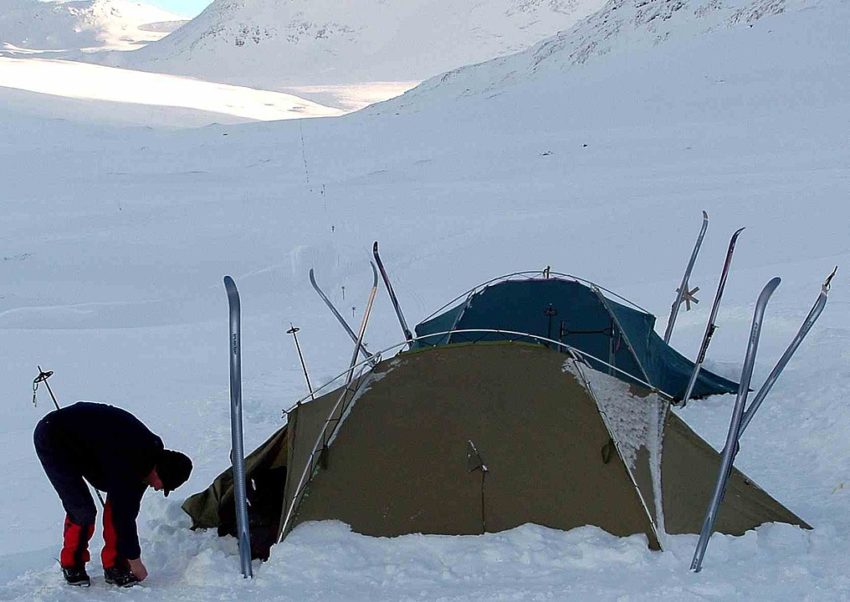Much of the tent camping population lives in the northern latitudes. As a result most camping activity happens during the short summer season. If you are wanting to extend your camping season into the colder months, than some may want to consider finding a good and safe way to heat their tent.
Is there a safe way to heat a tent? One of the safest way to heat your tent in the winter is with a wood stove. This superior way of heating your tent can only be used with a fire treated canvas, poly or nylon hot tent. Other safe and effective ways to heat a regular tent would be with a heat exchange system using either a traditional Finnish log torch or gas powered heat exchanger. These systems are safe and effective ways to heat your tent even in winter.
The following is a list and explanation of these heating methods. For many of these methods it is important to familiarize yourself with the safety risks involved. It would also be wise to use a carbon monoxide detector/alarm to be on the safe side when using these methods to heat your tent. If you are wanting to travel lightweight than it is always best to use a warm down filled sleeping bag and dressing warm vs hauling around heaters. You should never solely rely on a heat system to get you through the night. A warm sleeping bag is a necessity when winter camping.
If you are snow trekking in winter putting your stove and equipment on a sled is an effective way to travel through the snow.
#1 Wood Stove
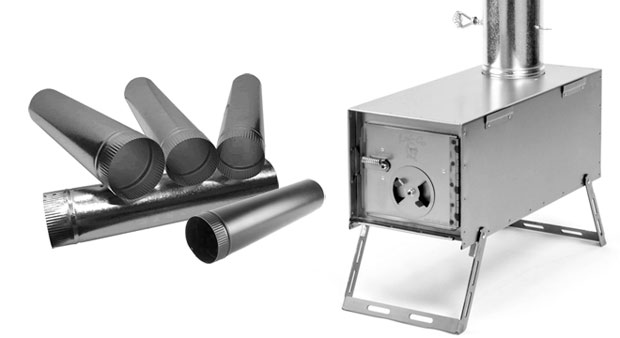
A wood stove is the best way to heat a tent. Here are some reasons why:
- unlimited fuel (only if camping in a wooded area)
- heat is radiant, dry and reduces condensation
- can cook on the stove in winter
- relatively safe if used correctly
- comforting
- clean (smoke while polluting is considered a natural process by most)
- minimal weight (there are ultralight options available)
- you do not need to bring fuel
- no electricity required
Cons:
- takes effort to chop wood (for most outdoor enthusiasts this is part of experience so not a con)
- must feed the fire from time to time
- not extremely light
- must run stove at peak performance to avoid creosote buildup
#2 Finnish Log Torch
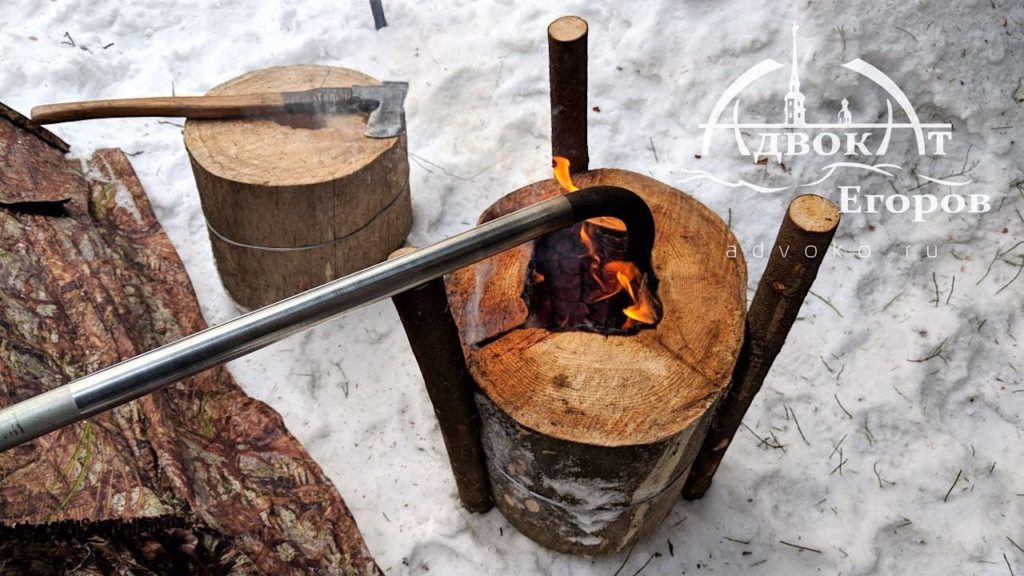
Making a log torch is a traditional way to get heat. It involves building a fire within a chopped up and partially culled out log. You can create a basic heat exchanger by running a pipe through the center of the heated log and into your tent. To be on the safe side it is best not to use galvanized metal and to use a carbon monoxide alarm sensor (the pipe must go below the fire to draw fresh air). Here are the advantages of using this system:
- no electricity required
- no need to carry fuel or heater
- heats up a fairly large area
- fuel supply can be unlimited
- no moving parts, concept is simple
- the pipe draws fresh air from below the fire (no carbon monoxide)
Here are some cons:
- wood must be dry
- must have access to larger logs for longer burning time
- takes time to prepare
- labor intensive
- must bring a pipe with you
- concept simple but takes some skill to implement
- difficult to implement in rainy conditions
#3 Propane/Butane Heat Exchanger
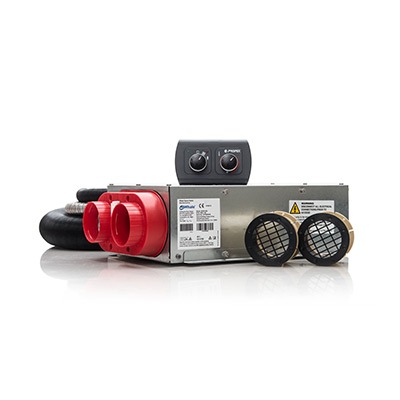
A propane heat exchanger is a system that is placed outside(where the combustion takes place) and like the Finnish Log Torch pushes the heat into the tent via a tube. Here are some advantages:
- fuel easy to transport
- can be easily powered from your vehicle
- easy to attach propane tank to system
- air is clean and hot
- air is dry (no condensation issues)
- immediate heating capability
- thermostat controlled temperature
- can be exposed to elements
- no carbon monoxide risk
- safe to use
- no open flame
cons:
- draws electricity
- expensive
- not lightweight
#4 Diesel Heat Exchanger
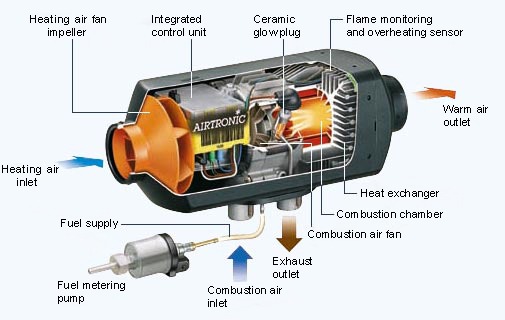
Here are the advantages of using a diesel powered heat exchanger:
- extremely efficient (half a gallon diesel heats a tent all night)
- thermostat controlled heat
- less expensive than propane exchanger
Cons:
- second battery needed to run (needs a lot of power to start)
- needs to be installed on something (can buy large self contained unit though)
- some must be kept out of weather
- not 100% reliable
- can be noisy
- diesel fuel smells really bad if spilled (not easy to transport)
#5 Propane Tent Heater
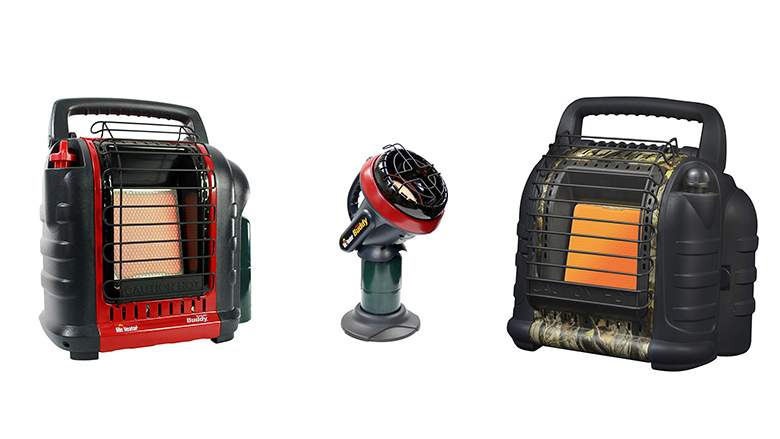
Using a propane tent heater is a popular way to heat your tent. However this method can have some drawbacks and safety concerns to consider before rushing to purchase. Firstly, while some of these heaters have an emergency shut off system if they are accidently knocked over, there have been cases of tents catching fire. While a propane heater can be safely used in other types of camping shelters using one in a tent is not risk free. Here are some of the advantages:
- inexpensive
- easy to use
- instant heat
Cons:
- mainly radiant heat (not effective for heating a large area)
- can make condensation worse inside the tent (burning propane releases water vapor into your tent)
- Safety – Open flame inside tent, risk of bedding etc. touching it.
- risk of producing carbon monoxide if low air oxygen (some have low oxygen sensor built in)
So there you have some ways to heat a tent safely and effectively. I left out some other ways to heat a tent such as heating up rocks etc. These ways can definitely help you in a survival situation but we are discussing non- survival situations that one can plan for in advance. Using a heated blanket, socks etc. can be another way to keep warm in your tent however this article was more focused on how to heat your tent. While nothing can truly replace warm clothing and a good sleeping bag, having a heat source other than an outdoor fire can be a great way to extend your camping season.
